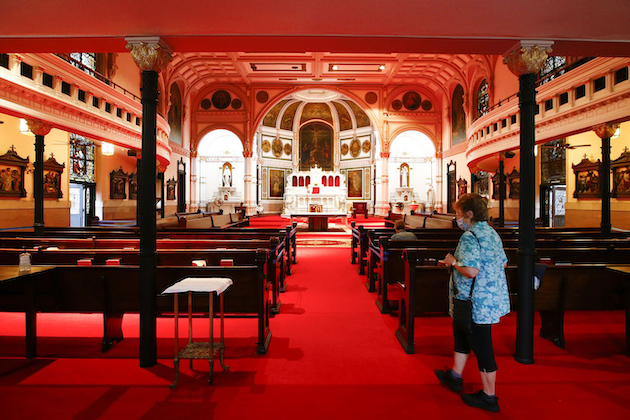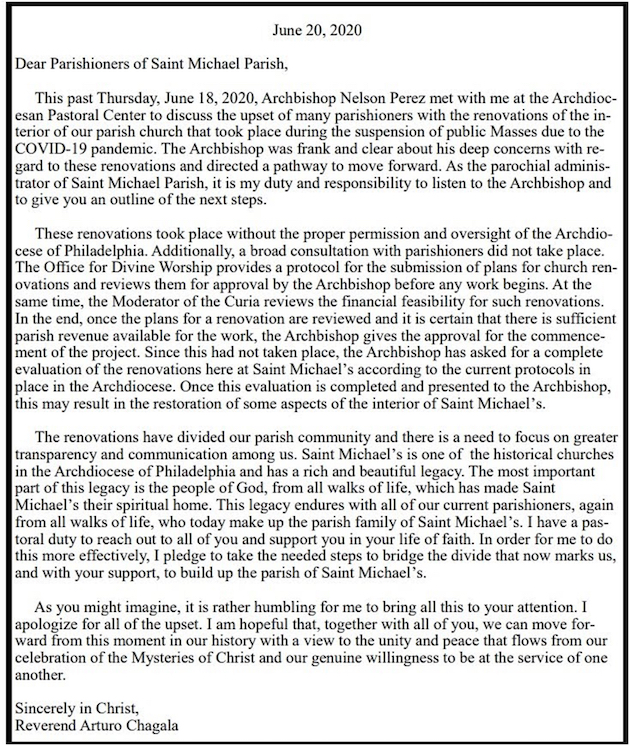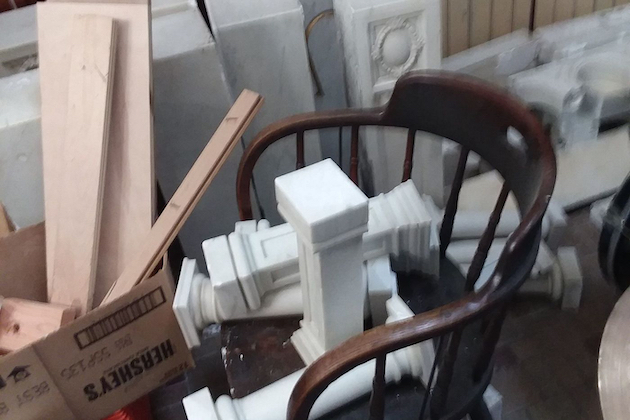
From the Philadelphia Inquirer: “At Philly Catholic churches, secret renovations expose rift between traditional and Neo-Catechumenal members” (By Valerie Russ, 8/19/2020)
For the last 12 years, Donna Panno, who leads the singing for Sunday Mass at St. Michael Roman Catholic Church in North Philadelphia, sat in the first pew. It was the same pew in which her mother, now 91, fainted as a 6-year-old from a fever.
But while St. Michael was closed because of the pandemic between March and early June, that pew, along with many others, was ripped from the historic church’s hardwood floors, the altar rails removed. The center-aisle marble floor — down which members and their parents before them had marched to be married — as well as the hardwood floors beneath the remaining pews were covered in bright red carpeting.(See photo above; my bolding)
It all happened under the direction of the Rev. Arturo Chagala, who, since 2014 has led both the traditional Catholic congregation at the church, at Second and Jefferson Streets, as well as the members of the Neo-Catechumenal Way, an evangelical ministry that’s been acknowledged by the Vatican since 2008 and that at St. Michael comprises about 10% of the almost 250 parishioners.
Obviously parishioners – of the “traditional Catholic congregation,” that is – were upset. But this is not the only church where this has taken place:
The uproar marked the second instance this summer where members of a Catholic parish have publicly condemned a Neo-Catechumenal Way leader for major overhauls of their sanctuaries without their input, exposing a growing rift between longtime parishioners and Neo-Catechumenal members.
At St. Charles Borromeo in South Philadelphia, parishioners have taken to public protests, alleging that the Rev. Esteban Granyak made renovations to the chapel without consulting its longtime, predominantly Black, parishioners. Among other changes, he converted the basement gym into a separate worship space for Neo-Catechumenal followers, even though its longtime members used it to gather for repasts after funerals. Also, the marble altar railings used when kneeling for prayer or Communion were removed.(my bolding)
Others, besides the parishioners of St. Charles and St. Michael, are not amused:
Architectural historian Oscar Beisert said his “blood boiled” when he saw pictures of the remodeled St. Michael sanctuary. Although its historic designation by the city only protects a building’s exterior, he called the changes a travesty.
“He took a classically beautiful building and vandalized it,” he said. “I call it architectural vandalism.”
Even Massimo Faggioli is quoted in this article making distinctly critical remarks about the Neocathecumenal way. And the new Philadelphia archbishop, Nelson J. Pérez, has intervened in the matter. The pastor of St Michael’s had to issue an apologetic letter to his congregation:

The case is currently under consideration at both churches. How many of these changes will be reversed – and when – is as of now undecided. Actually these specific “renovations” are very similar to so many others imposed on parishes in the past. What is new is the organized articulate opposition to them – and the hearing given to the protestors by the local archdiocese.
(Below: the wreckage of the Communion Rail at St. Michael’s. Photo:Philadelphia Inquirer)

(Thanks to a friendly reader for the tip.)
Related Articles
1 user responded in this post